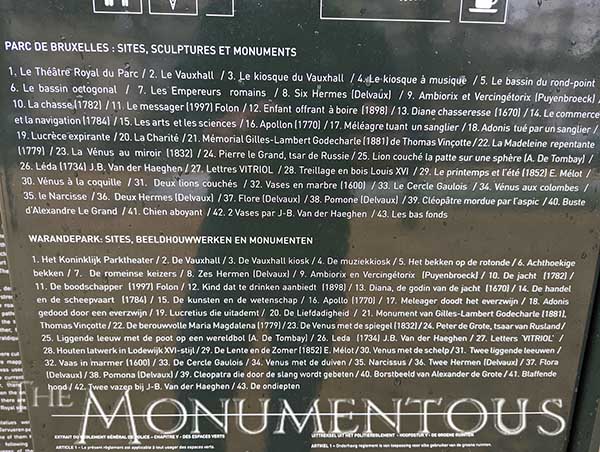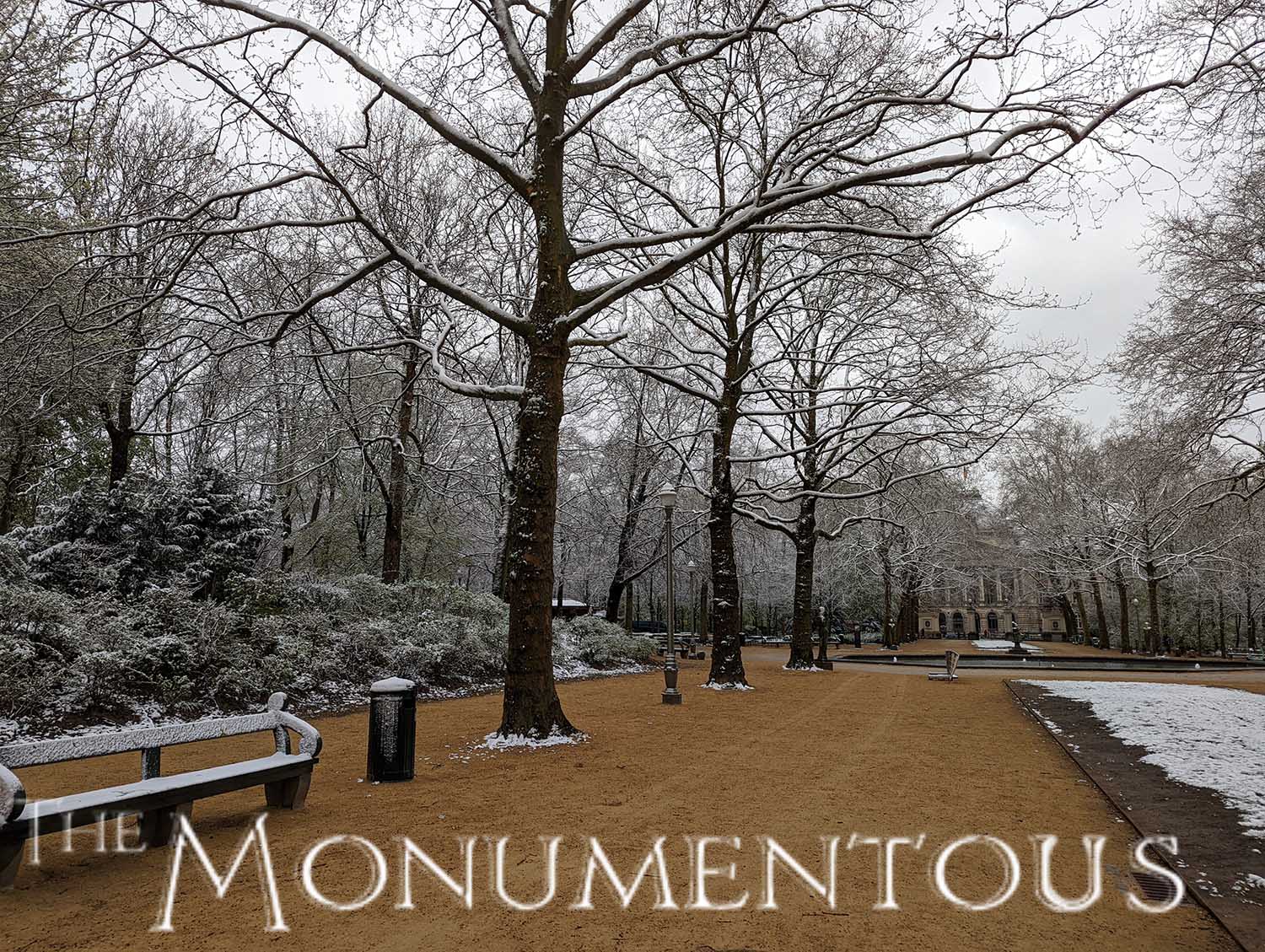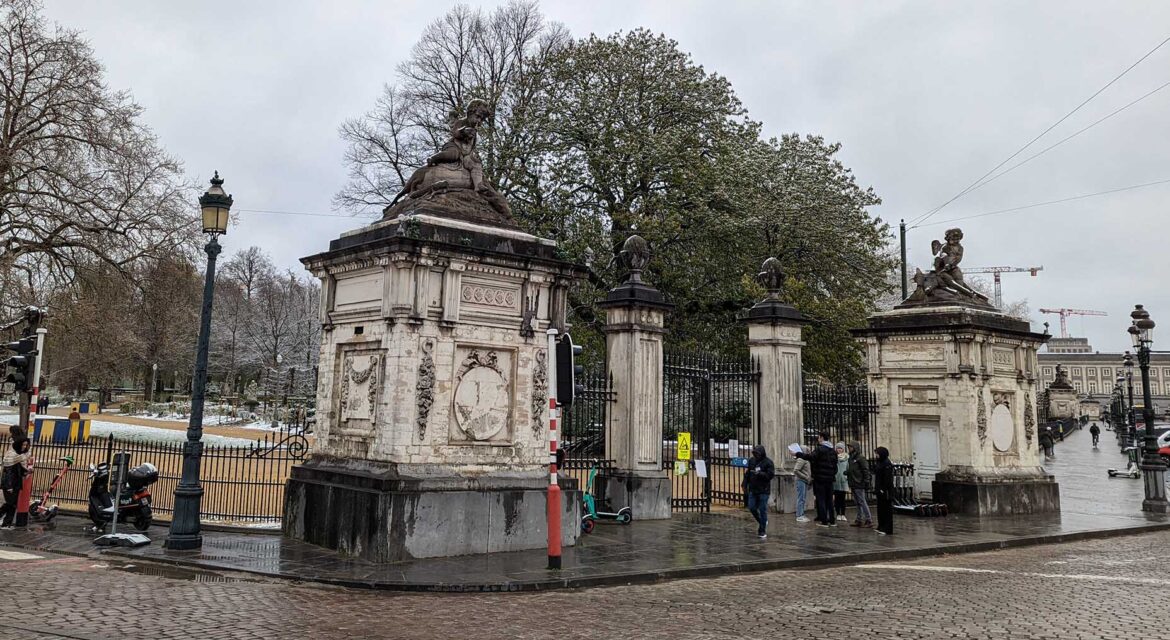 The largest urban public park in Brussels, Belgium, the Park of Brussels features a collection of sculptures, fountains and footpaths to create a variety of experiences for residents and visitors. Featuring tree-lined avenues and space for organized and private gatherings, it has become much more than an urban green space to create engagement that resonates across multiple eras of the city.
The largest urban public park in Brussels, Belgium, the Park of Brussels features a collection of sculptures, fountains and footpaths to create a variety of experiences for residents and visitors. Featuring tree-lined avenues and space for organized and private gatherings, it has become much more than an urban green space to create engagement that resonates across multiple eras of the city.

The First Public Park in Brussels
 The Park of Brussels was designed during the construction of the Place Royale in 1774, which is why it was formally named Royal Park. The space had been used as hunting grounds for centuries but the transformation of the area into a park required three main avenues to be leveled. It would become Brussel’s first park.
The Park of Brussels was designed during the construction of the Place Royale in 1774, which is why it was formally named Royal Park. The space had been used as hunting grounds for centuries but the transformation of the area into a park required three main avenues to be leveled. It would become Brussel’s first park.
Over the years, various landmarks and statues were installed across the Park of Brussels but they have their own distinct histories. Many that had been installed were removed or destroyed on account of revolutionary activities across the region in the late 1700s and early 1800s. Monumental railings were installed in 1849, some of which feature grouped sculptures that welcome visitors into the park. As a testament to their significance, a major effort was undertaken to restore these railings, sculptures and gatehouses to their original state.
These railings and gatehouses feature angle motifs, with Spring and Summer and The Hunt being the most prominent of these. They are just a handful of the many monuments that the park features.

The Many Monuments of Brussels Park
 Brussels Park contains around sixty sculptures, most of which were inspired by Greco-Roman mythology in both form and figure. These pieces are scattered around the park but various guides and maps point out their location and history, creating another level of engagement for audiences.
Brussels Park contains around sixty sculptures, most of which were inspired by Greco-Roman mythology in both form and figure. These pieces are scattered around the park but various guides and maps point out their location and history, creating another level of engagement for audiences.
The Trade and Navigation sculpture was created in 1784 and is arguably the most popular landmark in the park. It shows two children, one of whom is holding a medallion with a figure of the Prince of Starhemberg, who presided over the creation of the Park of Brussels.
Twelve busts of Roman Emperors were created for the gallery of the Courtyard that formed part of a palace but were transferred to the Park of Brussels following a fire. Nearby is the Melegear Killing a Boar sculpture as well as the Adonis Killed by a Boar piece, both of which were sculptured by Pierre Lejeune. A bust of Peter the Great was offered to the city in 1848. This was in memory of a stay by Tsar Peter the Great in 1717, who is said to have drunk water out of the Madeleine Fountain.
The Monument to Godecharle by Vinçotte, and statues to Narciuss as well as Diana are just a few of the other sculptures located across the park. Many of them are connected to an ideal and era of the past but their placement throughout the space highlights what it means to create experiences for audiences in the present. These pieces along with the pathways, open green space and pavilions have fully transformed the types of experiences that both residents and visitors can have all across the park.

An Evolving Legacy
 Widely known as a place where many Belgians and foreigners go to relax or to enjoy some of the history that came to define the city and country, the Park of Brussels is as an essential part of maps and guides to the city. Connected to a legacy for Brussels that continues to evolve, audiences can experience this legacy all across the space, highlighting how individual monuments have helped to collectively make the entire park an essential landmark for all of Belgium.
Widely known as a place where many Belgians and foreigners go to relax or to enjoy some of the history that came to define the city and country, the Park of Brussels is as an essential part of maps and guides to the city. Connected to a legacy for Brussels that continues to evolve, audiences can experience this legacy all across the space, highlighting how individual monuments have helped to collectively make the entire park an essential landmark for all of Belgium.

